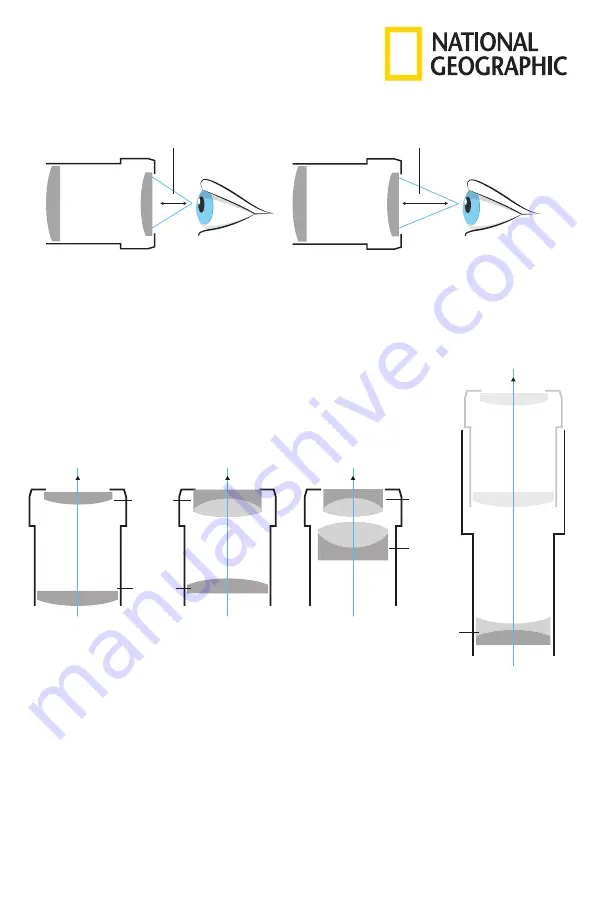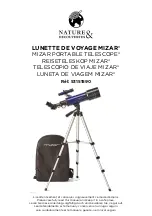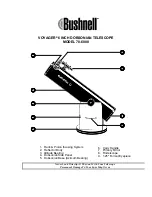
13
Eyepiece Lens
Long Eye Relief Distance
Eyepiece Lens
Short Eye Relief Distance
Eyepiece Lens
Exit Pupil (mm)
Eyepiece Lens
Long Eye Relief Distance
Eyepiece Lens
Short Eye Relief Distance
Eyepiece Lens
Exit Pupil (mm)
Eye Relief
Eye relief is all about a comfortable viewing experience because it is the distance at which you need to
position your eye from the eyepiece’s outermost surface to enjoy the full field of view. This characteristic
is of special concern to observers who wear glasses to correct an astigmatism, because a long enough
eye relief is necessary to allow room
for glasses.
Huygenian Eyepieces:
A Huygenian eyepiece uses two plano-convex lenses separated by an air gap. They have a fairly narrow
apparent field of view.
Kellner Eyepieces:
A Kellner eyepiece uses three lens elements - two of which are paired together in an achromatic doublet
design to minimize chromatic aberrations. They typically produce an apparent field of view around 45°.
Plössl Eyepieces:
A Plossl eyepiece uses two doublets (a pairing of lens) for a total of four lens elements. This eyepiece
design delivers sharp views and an apparent field of view of approximately 50°, which works well for both
planetary and deep sky viewing.
Barlow Lens:
A Barlow lens effectively increases the focal length of a telescope. It is inserted between the eyepiece
and the focuser/diagonal (depending on the optical setup) and multiplies the magnification power of the
eyepiece. For example, a 2x Barlow will double the magnification of a particular eyepiece.
Barlow Lens
2 Lens Elements
Huygenian Eyepiece
2 Lens Elements
Light
Kellner Eyepiece
3 Lens Elements
Light
Plössl Eyepiece
4 Lens Elements
Light
Light
Eye Lens
Field Lens
Eye Lens
Field Lens
Field Lens



























